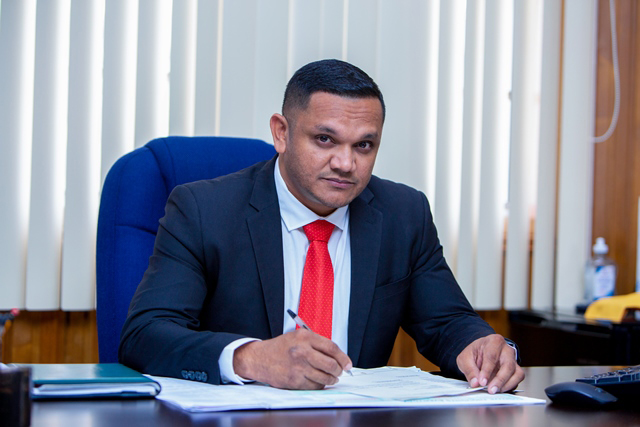Guyana will get a total of five lifts of one million barrels of oil this year and not the anticipated six after production was scaled back earlier this year due to the flash gas compressor problems aboard the Liza Destiny FPSO, according to Minister of Natural Resources Vickram Bharrat.
However, given assurances from the operator that there would not be a recurrence since measures have already been put in place, Bharrat says that there will be six lifts next year from that vessel.
“On the 22nd of this month will be our fourth lift and then we’ll have one in November. That would be the five for the year. We were pushing to have six this year but because of the issue with the gas compressor, we had to ask them to lower the production, so that they could lower flaring. Because of that we may not be able to get the 6th lift for 2021 but we would be able to get it for 2022,” the minister told the Sunday Stabroek last week.
“It is very likely we will get six lifts in 2022. Also, they are bringing in a spare compressor so if this one develops problems again, they’ll replace it, so there is no down time,” he informed.
Since production began in December of 2019, Guyana has had seven lifts, four last year and three for this year.
Revenue from the sale of the lifts plus royalties and interest amount to a total of US$436 million, which is being kept in a New York Federal Reserve Bank account pending the establishment of the Natural Resources Fund.
The minister pointed out that there will be increased production in the Stabroek Block by the end of the first quarter next year, since another FPSO – the Liza Unity – will be working in the offshore licensed area.
That FPSO is already on its way to Guyana and is scheduled to arrive by November 24th.
“Unity left Singapore and should reach here, I think, by November 24th. That is the date that they have given us, barring [bad] weather conditions. Once it reaches here in November, we are working towards an early start-up; that is a start up in early 2022,” Bharrat was quoted as saying.
“Unity [will produce] 220,000 barrels a day. So early 2022, we will be producing [overall from both vessels] 340,000 barrels per day. The good thing with Unity, was that we asked that they correct the problem [that saw compressor issues on the Liza Destiny]. They have given us the full assurance that it would not occur with … Unity. So there should be no down time with Unity,” he added.
The Liza Unity FPSO is designed to produce approximately 220,000 barrels of oil per day, to have an associated gas treatment capacity of 400 million cubic feet per day and a water injection capacity of 250,000 barrels per day. The FPSO will be spread-moored in water depth of about 1,600 meters and will be able to store around 2 million barrels of crude oil. There are total of 19 topsides modules.
Meanwhile, although Saudi Arabian company Aramco Trading Limited has been awarded the contract to market Guyana’s oil share from the Liza Destiny for one year, government will by the time the Liza Unity arrives, advertise for a marketer for its crude from that vessel. “The Aramco contract is for Destiny and for one year… we will go out later in the year for another marketer; I would say late October, early November,” Bharrat said. This is because government wants to be prepared to have its marketer on board by the time the first lift from the two million-barrel oil storage Unity FPSO is ready.
Recently, government gave the go ahead to have Aramco market the single-lift slated for this month to avoid this country having to forfeit its one million barrels of crude.
“Why we had to push ahead with this lift is that the time was short and the window was closing, and if we did not finalise the company to do this lift, it would have become what is called a distressed cargo,” Bharrat said.
He explained that lifts, according to the 2016 Pro-duction Sharing Agree-ment (PSA), are to be removed promptly so as not to hinder production. And if this is not done, the cargo could be forfeited.
In this case, it would mean that the country could have lost at least US$65 million, according to the global price forecast for the commodity. The Brent oil price has recently hovered around US$75 per barrel.
“A distressed cargo—the PSA says that the operator can sell it to recover their cost, and we did not want that so we had to push ahead quickly to finalise this lift, while assuring that the contract and everything is drafted and Aramco is on board,” Bharrat said.
The minister said that ExxonMobil has given a commitment for early startup of the Unity as “they want to commission as early as is possible” and he is anticipating that would be at least by the end of the first quarter of 2021.
He explained that the FPSO will be hooked up to the seabed, which will then be followed by installation of umbilicals and risers and then testing, a process that takes a few months.





